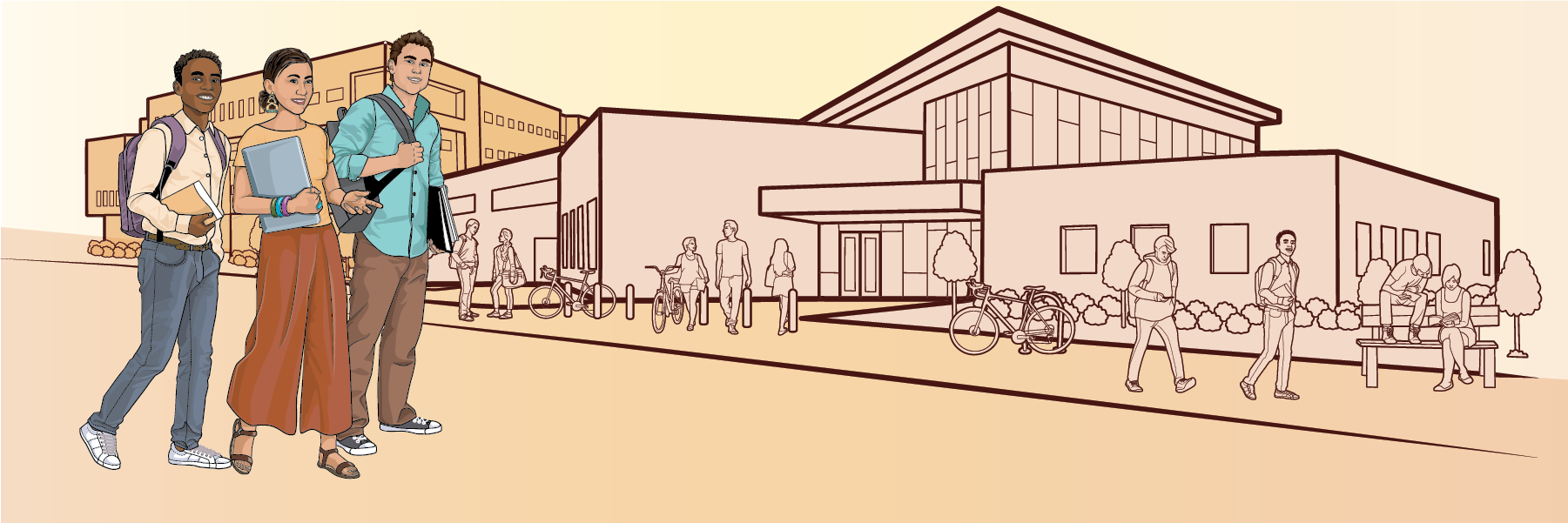MiraCosta College:
Express Counseling
The Beginning
In 2018, counseling departments across the college agreed to change from a drop-in model to “Express Counseling.” In the drop-in model, counseling sessions lasted 5 to 15 minutes on average and could not address many student concerns, including Comprehensive Student Education Plans (CSEPs) which were developed only during a full appointment. The college’s data showed that a high percentage of “disproportionately impacted” students attended drop-in counseling appointments and few attended full 45-minute appointments. The data also showed that students came in for several drop-in appointments within a given semester, engaging in multiple short sessions to get questions answered. And disproportionately impacted students were less likely to develop a CSEP within their first year, a critical indicator of their likelihood to attain an educational goal or complete more units than they need. Counseling faculty met across the division and decided to shift to express counseling so they could assess student needs in the moment and provide a range of counseling services to ensure each student is served right away.
Implementation
The General Counseling department utilized Student Success and Support Program (SSSP) funding to expand staffing for express counseling, and it adopted a mobile model where counselors meet with students outside of the counseling office (in the Social Justice and Equity Center, club room, or cafeteria, for example). Express counseling also moved out of counselors’ offices and into spaces that students occupy. This shift allowed for a synergy, where students can see counselors engaging with students and counselors feel more connected to the students they serve. If a counselor feels a student needs more in-depth services, they can take the student back to their office to meet one-on-one. The goals of this shift were to:
Increase the number of disproportionately impacted students who access counseling services and develop CSEPs
Decrease the number of short visits that students need to get questions answered
Ensure that students receive counseling services where they are (and outside of the counseling office)
Create a sustainable counseling model where counselors can assess student need and be responsive in the moment
Student Experience
Counseling services are easier to access
Counseling seems less intimidating because students are in spaces they are comfortable
Students can see other students meeting with counselors. This helps to dissolve any stigma associated with seeking and receiving help
Early Outcomes
MiraCosta compared data between students served in the General Counseling department Spring 2018 and Spring 2019 to assess the effectiveness of Express Counseling in meeting identified goals.
The data showed that there was a 5.4% increase in the number of students served via Express Counseling and a 5.8% increase in the types of services rendered. In particular, services related to probation, dismissal, and comprehensive student education plans showed the greatest increases.
There was a decrease in one-on-one appointments, which was anticipated, but the overall number of students served increased.
Slight increases were noted for disproportionately impacted populations including male, African-American, Latinx, and Native Hawaiian/Pacific Islander student populations, although increases were on par with increases noted for White students as well.
The majority of students who showed increases were continuing students who had previously accessed counseling services, with only slight increases in the number of students accessing services for the first time. Based on the results, Express Counseling has become the permanent model across all departments.



